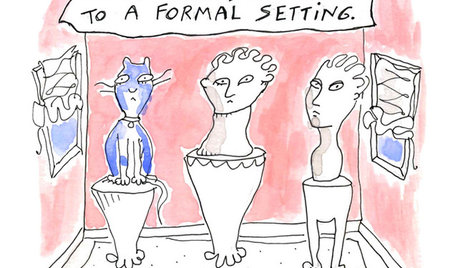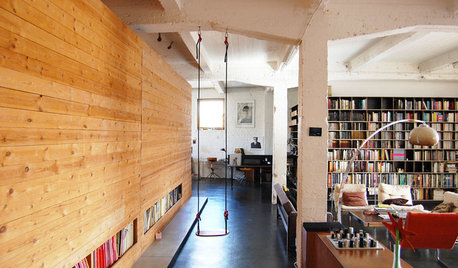More Fun with Shin-Gyo-So
18 years ago
Related Stories

GARDENING AND LANDSCAPING9 Ways to Make Your Yard More Fun for Kids
Draw the younger set outside while keeping grown-up spaces and style intact. Some of these ideas don’t even cost a dime!
Full Story
MOST POPULAR8 Budget-Friendly Ways to Fun Up Your Patio
Amp up the charm, comfort and personality of your outdoor space with drapery, lighting and more
Full Story
SMALL SPACES10 Ways to Make Your Place Feel More Spacious
Is your living room on the small or narrow side? Use these design tricks to open it up
Full Story
MOST POPULAR7 Ways Cats Help You Decorate
Furry felines add to our decor in so many ways. These just scratch the surface
Full Story
DECORATING GUIDESMake Your Fixer-Upper Fabulous on a Budget
So many makeover projects, so little time and money. Here's where to focus your home improvement efforts for the best results
Full Story
KITCHEN DESIGNIs a Kitchen Corner Sink Right for You?
We cover all the angles of the kitchen corner, from savvy storage to traffic issues, so you can make a smart decision about your sink
Full Story
KITCHEN STORAGE8 Cabinet Door and Drawer Types for an Exceptional Kitchen
Pick a pocket or flip for hydraulic. These alternatives to standard swing-out cabinet doors offer more personalized functionality
Full Story
LOFTSIt’s a Wrap: Bookcase Walls Create Bedrooms in a Loft
In a Brussels warehouse loft, bedroom islands constructed for privacy are paneled in wood and bookcases
Full Story
KITCHEN DESIGNKitchen of the Week: Casual Equestrian Feel on a Horse Farm
Red cabinetry, salvaged barn decor and a window for feeding treats to horses combine in a lively, comfortable family kitchen
Full Story



Archer55
Lee_MEOriginal Author
Related Discussions
New Arivals + More Designs
Q
NEW: i have an idea and this will be fun !!!!!!!!!!!!!!!!
Q
That was sooooooooooooo fun!
Q
Please help! Poison Ivy SOS
Q
ScottReil_GD
edzard
ron_s
ron_s
Lee_MEOriginal Author
edzard
ron_s
edzard
inkognito
yama
nachodaddy
kobold
ron_s
nachodaddy
nachodaddy
ScottReil_GD
ScottReil_GD
ron_s
ron_s
yukio